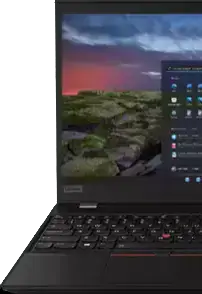What is Chromebook?
A Chromebook is a type of laptop that runs on Google's Chrome operating system (OS). It is designed to primarily use web applications and cloud storage, with most of its documents and files stored online rather than locally on the device itself.
How is a Chromebook different from a traditional laptop?
Unlike traditional laptops, Chromebooks rely heavily on internet connection and cloud-based services. They prioritize web applications and online storage over locally installed software and files. Chromebooks often have lower hardware specifications, making them more affordable and lightweight compared to traditional laptops.
What are the benefits of using a Chromebook?
One of the main benefits of using a Chromebook is its fast startup and shutdown times. Since Chrome OS is a lightweight operating system, it boots up quickly, allowing you to start working almost instantly. Chromebooks also receive automatic updates from Google, ensuring that you have the latest security patches and features without any manual intervention. Additionally, their lower cost and longer battery life make Chromebooks an attractive option for students and those who need a portable device for basic computing tasks.
What kind of apps are available on a Chromebook?
The Chrome Web Store offers a variety of apps and extensions that cater to different needs. You can find productivity tools like Google Docs, Sheets, and Slides for creating documents, spreadsheets, and presentations. There are also communication apps like Gmail, Hangouts, and Skype for staying connected with others. Additionally, there are entertainment apps like Netflix, Spotify, and games that you can enjoy on your Chromebook.
How secure are Chromebooks?
Chromebooks are known for their security features. Chrome OS employs multiple layers of security, including sandboxing, verified boot, and automatic updates, which help protect against malware and other threats. Additionally, when using a Chromebook, your data is automatically encrypted and stored securely in the cloud, reducing the risk of data loss due to hardware failure or theft.
Can I connect peripherals to a Chromebook?
Yes, you can connect various peripherals to a Chromebook. Most Chromebooks have universal serial bus (USB) ports that allow you to connect external devices such as keyboards, mice, printers, and external storage drives. Additionally, many Chromebooks support Bluetooth®, enabling wireless connectivity with compatible devices like speakers, headphones, and smartphones.
Can I run Android™ apps on a Chromebook?
Yes, many newer Chromebooks support running Android™ apps from the Google Play Store. This provides access to a vast library of apps designed for smartphones and tablets, further expanding the capabilities of your Chromebook. You can use popular apps like Microsoft Office, Adobe Photoshop Express, and many others, making your Chromebook more versatile.
Can I print from a Chromebook?
Yes, you can print from a Chromebook. Chrome OS supports both Google Cloud Print and many popular wireless printers. You can set up your printer through the Chromebook's settings and easily print documents, photos, and web pages. Additionally, some printers have built-in support for Chrome OS, allowing you to print directly without any additional setup.
Can I use Microsoft Office on a Chromebook?
Yes, you can use Microsoft Office applications on a Chromebook. Microsoft offers web versions of their popular Office suite, including Word, Excel, and PowerPoint, which can be accessed through the Chrome browser. Additionally, you can also use the Android versions of Microsoft Office apps available on the Google Play Store.
Are Chromebooks suitable for programming and coding?
Yes, Chromebooks can be used for programming and coding, although their suitability may depend on the specific requirements of the task. Chromebooks support web-based development environments and code editors, such as Visual Studio Code Online and Replit. You can also install Linux on some Chromebook models, which opens up more programming possibilities by allowing you to use a variety of development tools and environments.
Can I connect an external monitor to a Chromebook?
Yes, you can connect an external monitor to a Chromebook. Most Chromebooks have video output ports, such as high-definition multimedia interface (HDMI) or universal serial bus type-C (USB-C), that allow you to connect to an external display. By connecting a monitor, you can extend your Chromebook's screen or use it as a primary display, providing you with a larger workspace for productivity or entertainment purposes.
Is it possible to access files from other operating systems on a Chromebook?
Chromebooks can access files from other operating systems, including Windows. You can use cloud storage services like Google Drive or Dropbox to sync and access files across multiple devices and operating systems. Additionally, external storage devices formatted in a compatible file system (such as file allocation table 32 (FAT32) or extensible file allocation table (exFAT)) can be plugged into a Chromebook's USB port for easy file transfer.
Can I run Linux applications on a Chromebook?
Yes, many Chromebooks support running Linux applications. Chrome OS has a feature called "Linux (Beta)" that allows you to install a Linux environment, giving you access to a wide range of Linux applications and development tools. This feature enables you to run popular software like GNU image manipulation program (GIMP) for image editing, LibreOffice for productivity, and even development tools like Python and Node.js.
Can I connect a Chromebook to a virtual private network (VPN)?
Yes, you can connect a Chromebook to a VPN. Chrome OS has built-in support for various VPN protocols, allowing you to establish a secure connection to a remote network. You can configure and connect to a VPN from the Chromebook's settings, enabling you to access resources on a private network or enhance your online privacy and security.
Are Chromebooks suitable for video editing?
While Chromebooks may not be the most powerful devices for intensive video editing tasks, they can handle basic video editing needs. There are web-based video editing applications available, such as WeVideo and Clipchamp, which provide a range of editing features. Additionally, you can use Android™ video editing apps like Adobe Premiere Rush, Kinemaster, or PowerDirector on compatible Chromebook models.
What are the security features of Chromebooks?
Chromebooks are known for their strong security features. Chrome OS utilizes sandboxing, which isolates different processes and applications from one another, making it difficult for malware to spread. Chrome OS also employs verified boot, which checks the integrity of the operating system at startup to ensure it has not been tampered with. Additionally, automatic updates from Google ensure that your Chromebook receives the latest security patches and fixes for any vulnerabilities.
Can I access my Chromebook remotely?
Yes, you can access your Chromebook remotely using various methods. Chrome Remote Desktop is a Google Chrome browser extension that allows you to access and control your Chromebook from another computer or mobile device. You can also use remote desktop software like TeamViewer or AnyDesk to establish a remote connection to your Chromebook from another device.






